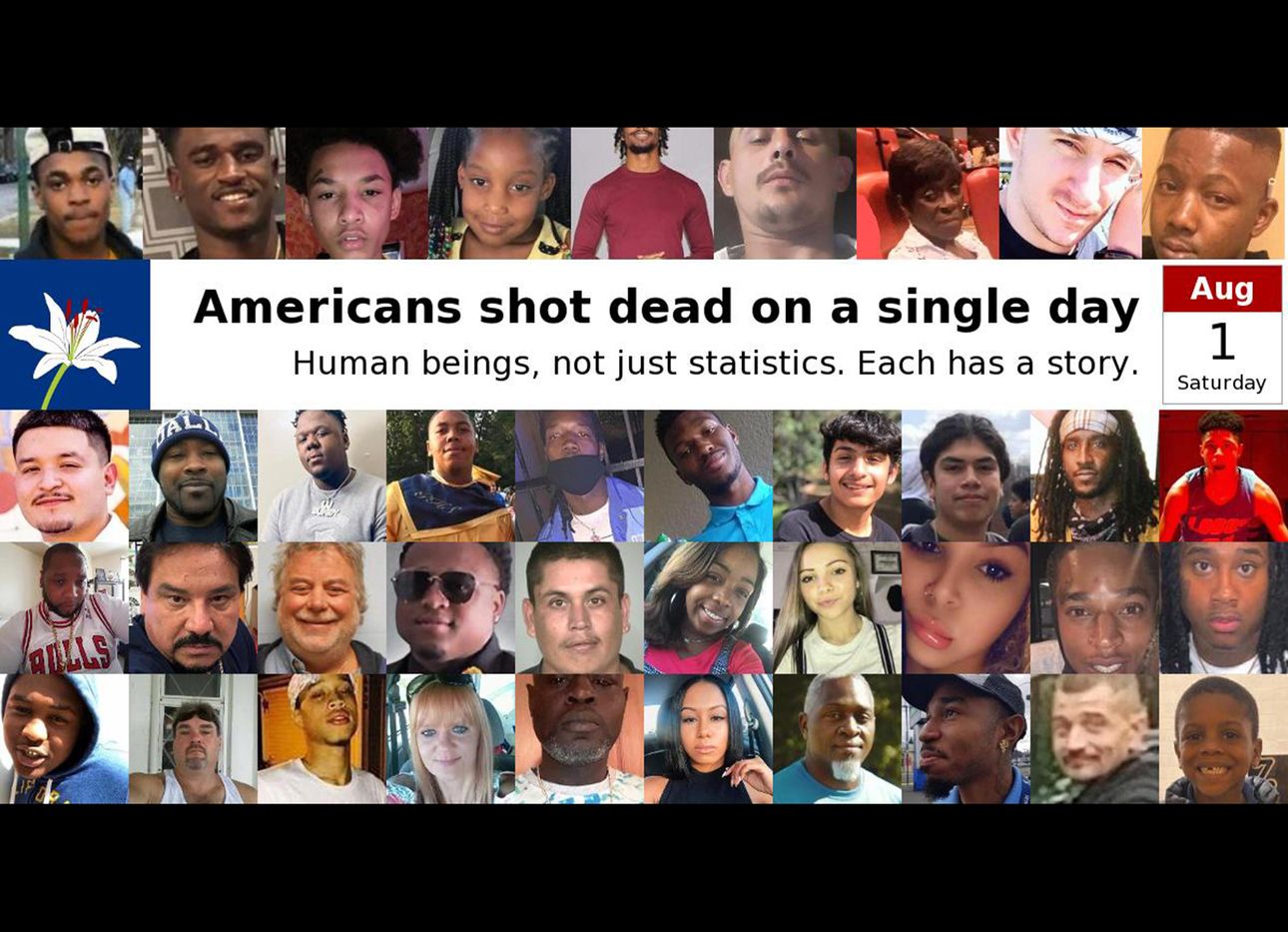
A Crowdsourced Internet Memorial Humanizes U.S. Gun Violence Victims
There’s a formula for homicide news stories: Place a TV anchor at the scene of a crime, and state that a victim was shot by an unidentified perpetrator. Later, run a mugshot of the person arrested for the offense. Based on hard facts reported by police, these simple-to-prepare segments typically focus on how a life was lost, not the life itself. On an average day, 89 people are fatally shot in the U.S., including suicides and accidents. The sheer volume of incidents makes them easy to tune out: We don’t know enough about the victims to care that they’re dead, and we’re definitely not moved to think about how to prevent it from happening again.
In December 2015, after a mass shooting in San Bernardino, California, killed fourteen people, Steve Tarzia decided to do something about this. Tarzia, an assistant professor of instruction in computer science at Northwestern University, set up the National Gun Violence Memorial, a low-tech online initiative that paints a different picture of gun-related deaths in America. Volunteers create a dedicated page for victims that includes their name, age, and when, where, and how they died. Hyperlinked news stories covering the incident, juxtaposed with photos sourced from obituaries and social media, tell the story of a human being. Tarzia’s team finds them on the Gun Violence Archive, and lists every one—including people who died while committing a crime, underscoring their belief that every life lost is a tragedy. A white lily, a symbol of rebirth, stands in when a photo of the victim can’t be found.
As the website gained popularity, it evolved from a counterpoint to the media frenzy that surrounds mass shootings to a grief support system. Tarzia added a Wikipedia-style feature in which anyone can anonymously add (or delete) a word or phrase to a victim’s profile. There’s also a “Like” button–esque option for users to light a virtual candle for the victim, a forum for people to talk about them, and a photo collage of all victims reported on any given day posted on the memorial’s Twitter and Facebook pages. Tomi Curry, a 23-year-old from Gary, Indiana, who died in a shooting, has more than 375 candles lit in his honor. Visitors have revealed his nicknames (“LaTomi James,” “Tomi Pickles”), personality (“sweetheart,” “silly,” “outspoken”), and messages just for him (“I love you cousin. Even if you didn’t feel it, you knew. I promise I got it down here.”).
Unlike physical memorials—unchanging structures, often imprinted with stark lists of names—Tarzia’s crowd-sourced memorial, updated in real time, holds a distinct value for its ever-changing quality. “The benefits are accessibility and reach,” he says, noting that his team has built tens of thousands of miniature communities centered around gun violence victims. “Friends and family from all over the country can easily find and share a memorial page and visit it regularly. Many visitors have made it a daily ritual to light a virtual candle and leave a comment for their loved one.”